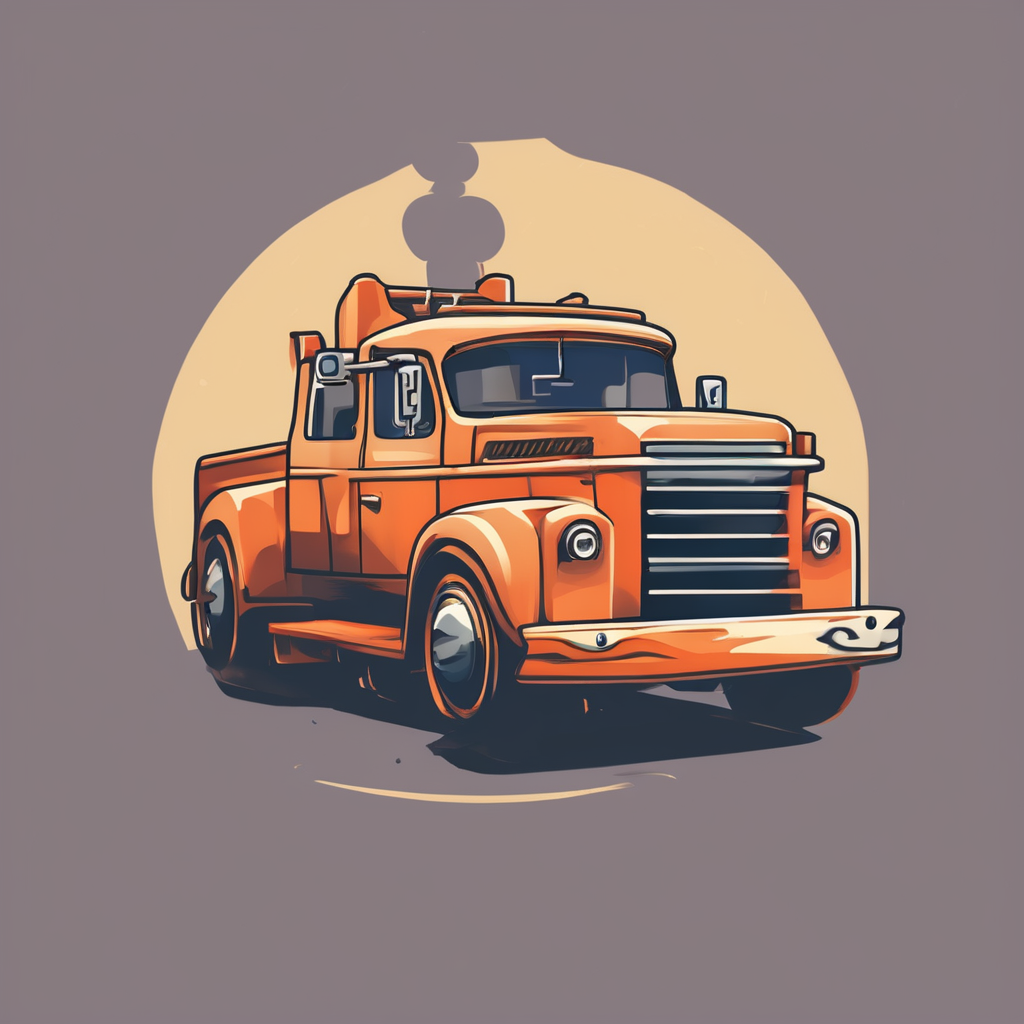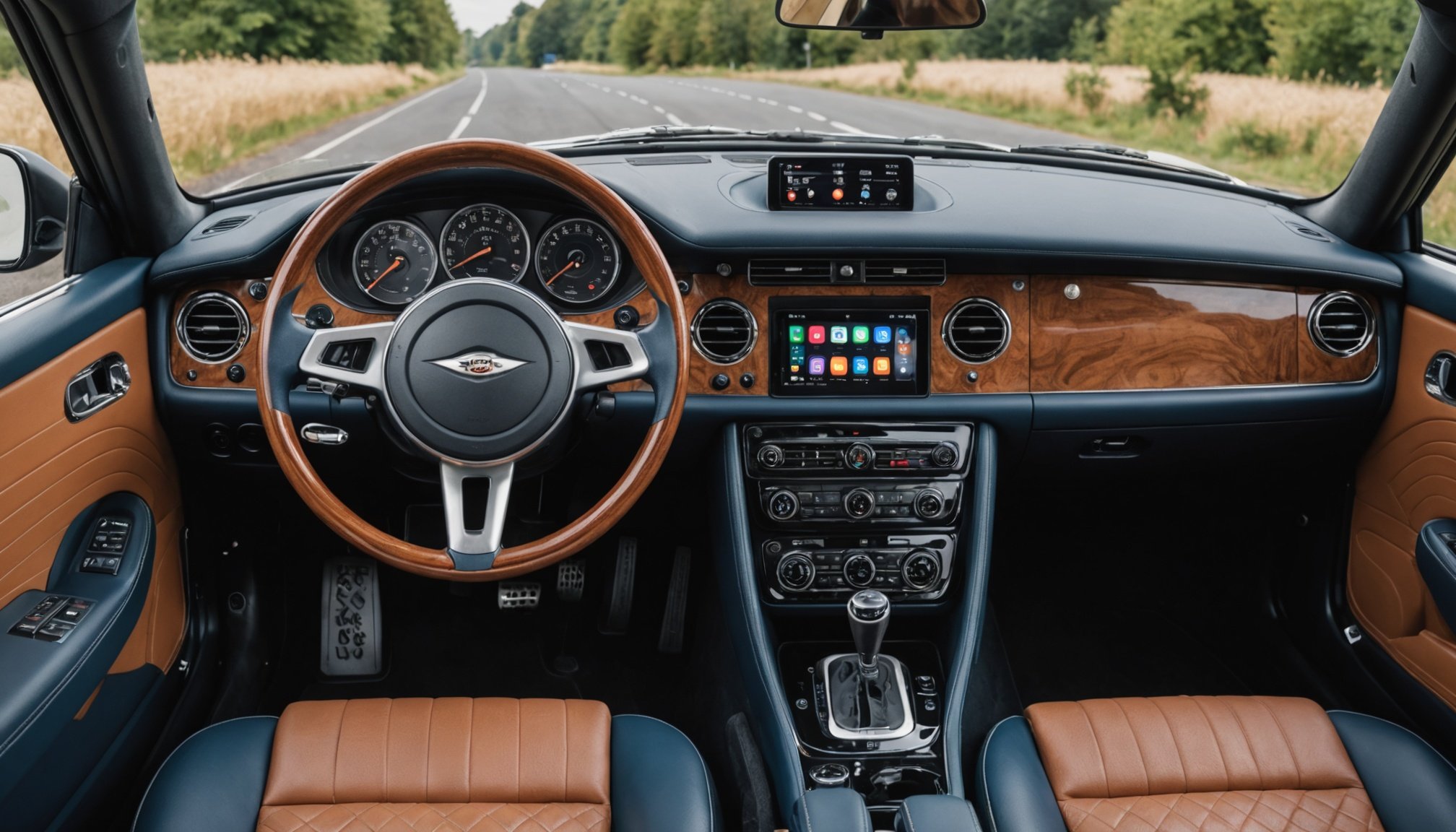Understanding the Benefits of Infotainment Systems in Classic Cars
Modernizing classic cars with infotainment systems offers numerous advantages. These systems bring a plethora of modern features that enhance the vehicle’s functionality and convenience. For example, integrating contemporary digital navigation and Bluetooth connections into a classic vehicle simplifies travel and music streaming, offering a seamless driving experience.
Moreover, updating a classic car with modern technology can significantly increase its resale value. Potential buyers are often more inclined towards a vehicle that retains its timeless appeal while featuring practical modern elements. The infusion of infotainment systems ensures the vehicle remains attractive not only nostalgically but also functionally.
Also to see : Essential tips for protecting your british car”s paint from detrimental uv ray damage
Importantly, while embracing these advancements, it’s crucial to maintain the classic car’s original aesthetics. Modern infotainment systems can be tailored to blend with classic interiors without compromising the vehicle’s unique vintage charm. Sleek designs and customizable interfaces allow these systems to enhance the car’s appeal without appearing out of place.
Incorporating infotainment systems into classic cars embodies the synthesis of heritage and innovation. It provides a dynamic way to enjoy the best of both worlds—preserving the car’s iconic look while embracing the conveniences of contemporary technology.
In parallel : Ultimate techniques for reducing interior vibrations in high-end british cars
Tools and Materials Required for Installation
Upgrading a classic car with modern infotainment systems requires a precise selection of installation tools and materials, ensuring classic car modernization without compromising integrity.
Essential Tools
Infotainment systems installation calls for precision tools to ensure safe, efficient integration. You’ll need:
- Screwdrivers: A set for various screws
- Pry tools: For dash panel removal without damage
- Wire strippers and crimpers: Essential for proper electrical connections
Recommended Materials
Choose materials compatible with classic car interiors to avoid aesthetic clashes. Key considerations include:
- Mounting kits: Designed specifically for classic cars
- Wiring harnesses: To simplify connections with existing systems
- Sound deadening mats: For reduced noise interference
Safety Gear
Ensure personal safety with proper gear during installation:
- Gloves: Protect hands from sharp edges
- Safety glasses: Prevent eye injuries during drilling or cutting
- Multimeter: For safely testing electrical aspects
By utilising the correct installation tools and materials, car enthusiasts can ensure their beloved classics benefit from modern technology, while carefully preserving the vehicle’s timeless charm.
Selecting the Right Infotainment System for British Classics
Choosing the right infotainment system for a British classic car involves understanding the unique needs of these vintage vehicles. Compatibility is a crucial factor; not every system will align seamlessly with the bespoke designs of classics. It’s vital to consider systems known for flexibility, ensuring they accommodate navigation, Bluetooth, and audio upgrades.
To ensure functionality without compromising the classic look, opt for systems with customization options tailored to British classics. Well-regarded choices often balance modern capabilities with vintage aesthetics, preserving the car’s iconic charm.
When evaluating features, prioritize navigation that supports current mapping software, ensuring safe and efficient travel. Bluetooth connectivity is essential for hands-free communication and streaming, enhancing convenience. Lastly, focus on audio quality; select systems offering superior sound without necessitating intrusive modifications.
Familiarize yourself with top recommendations specifically designed for British cars, offering the perfect marriage of innovation and retro style. Assess user reviews and expert insights to guide your decision.
Understanding these factors ensures a harmonious integration, allowing modern technology to enhance, rather than disrupt, the classic car experience.
Step-by-Step Installation Process
Embarking on a DIY installation guide for infotainment systems in classic cars can be straightforward yet rewarding. Understanding each step ensures a seamless transition from vintage to modern without compromising your classic’s charm.
Preparing the Vehicle
Start by prepping the vehicle. Remove any old equipment and clear the workspace. Double-checking inventory, as per the wiring diagram, prevents unexpected hiccups.
Wiring the Infotainment System
Once the vehicle is ready, focus on wiring. The wiring diagram acts as your roadmap. Carefully connect wires to ensure proper function, relying on colour codes and manual guidance. This precision ensures that features like navigation and Bluetooth work flawlessly.
Mounting the System
Finally, with wiring completed, securely mount the system. It’s crucial to do this without harming classic elements. Use mounting kits designed for classic cars to preserve their vintage appeal. Position the unit so it is both functional and visually harmonious with your dashboard.
Taking these steps with care ensures your system operates efficiently, enhancing your driving experience whilst maintaining the timeless allure of your classic car.
Troubleshooting Common Installation Issues
When upgrading infotainment systems in vintage cars, you might encounter several installation challenges. Being aware of common pitfalls and knowing how to address them is crucial for a successful upgrade.
Electrical Troubles
A frequent issue during installation involves electrical problems. If the system doesn’t power on, the culprit is often a loose connection or incorrect wiring. Use a multimeter to check continuity and ensure all connections adhere to the wiring diagram. Additionally, ensure the vehicle’s battery is sufficiently charged before installation.
Compatibility Challenges
Older systems may not gel with new infotainment systems. Often, adapting wiring harnesses can resolve basic compatibility problems. It’s essential to verify that the new system’s inputs and outputs align with the vehicle’s existing setup.
Avoiding Common Pitfalls
Preventing potential pitfalls requires careful preparation. Begin with a clear plan outlining each step of the installation process. If unsure about any aspect, seek advice from online forums or resources dedicated to classic car modernization.
Remember, patience and attention to detail are your allies. Addressing these concerns upfront will smooth the path to integrating modern tech while preserving your classic’s charm.
Visual Aids and Resources for Installation
Incorporating visual aids and comprehensive installation resources greatly facilitates the upgrade process of classic cars. Diagrams and videos provide step-by-step guidance, ensuring that each stage of the installation is executed with precision and understanding. These tools are invaluable for those engaging in a DIY car upgrade, as they offer clear visuals that complement written instructions.
An array of multimedia guides exists for enthusiasts to leverage, ranging from basic introduction videos to advanced installation tutorials. Online resources such as automotive forums and dedicated car enthusiast websites serve as excellent platforms for sharing experiences and troubleshooting challenges related to infotainment systems.
Forums dedicated to classic car modernization often host discussions where users exchange tips, recommend tools, and provide personal insights on overcoming compatibility issues. This communal support network is beneficial for both novice and experienced installers looking to ensure successful integrations of modern technology while maintaining vintage aesthetics.
For those seeking more traditional resources, a variety of books and manuals delve into the intricacies of retrofitting modern systems into classic vehicles. These reference guides offer detailed explanations and diagrams, solidifying the reader’s understanding of the technical aspects involved. Leveraging a combination of these resources ensures a comprehensive approach to upgrading classic cars.
Maintaining Aesthetic Integrity While Upgrading
Integrating infotainment systems into classic cars can be a delicate process, focusing on maintaining the vehicle’s aesthetic beauty. Ensuring the classic look stays intact while modernizing requires thoughtful design considerations. Here’s how to balance the modern with the vintage.
Strategies for Blending Modern Systems: Choose infotainment systems that allow customization so they harmonize with your car’s dashboard. Opt for sleek designs with retro-looking interfaces or hidden panels that can retract when not in use.
Materials and Finishes: When selecting materials, aim for those that complement and respect the car’s original textures and colours. Wood veneers, leather wraps, and chrome finishes can seamlessly merge modern tech with nostalgic designs.
For example, an experienced integrator might use a custom dashboard bezel to fit the new system, ensuring a perfect match with the rest of the interior.
Successful Integrations: Take inspiration from successful upgrades—like using OEM replica radios with integrated modern tech—to maintain a cohesive classic look. Many enthusiasts achieve this with systems that prioritize both aesthetics and performance, proving that modern technology and vintage allure can coexist beautifully.
Conclusion and Next Steps for Classic Car Owners
Modernizing classic cars by incorporating infotainment systems presents a rewarding journey, offering both practical and aesthetic benefits. Owners are often drawn towards further enhancing their vehicles, aiming to blend modern technology seamlessly with vintage charm.
Taking the Leap: Integrating modern elements into a classic car requires courage and vision. Embrace the challenge for the enjoyment and improved performance it offers.
Potential Projects: Following this upgrade, consider projects such as improving engine efficiency, enhancing suspension systems, or upgrading to eco-friendly components. These endeavors can heighten enjoyment of the vehicle while maintaining its unique appeal.
Community Resources: Engage with vibrant communities online, sharing expertise, and gathering tips. Participate in forums dedicated to classic car modernization. These are golden opportunities for sharing challenges, successes, and ongoing advice.
Resource Guide: Keep connecting with other enthusiasts through webinars, meet-ups, and workshops focused on modernizing automotive classics. Explore resources for parts and trustworthy professionals who respect the classic car ethos. By tapping into these resources, you ensure that your classic car continues to represent more than just a beautiful vehicle – it becomes a celebration of timeless design and technological advancement.











